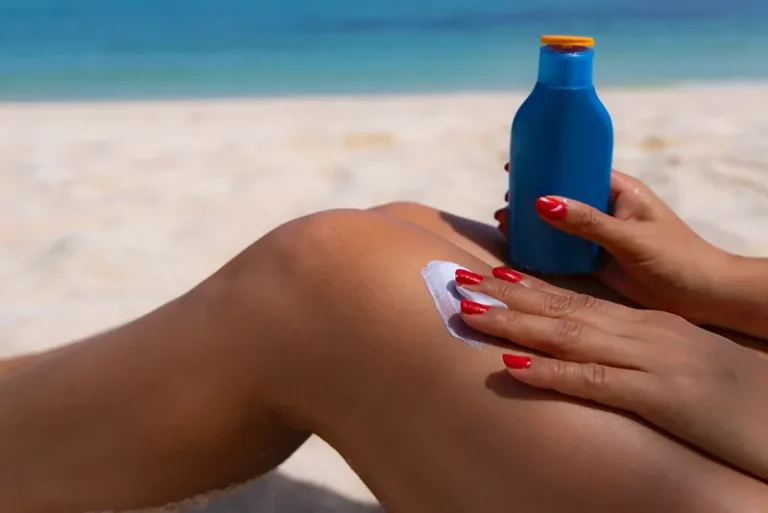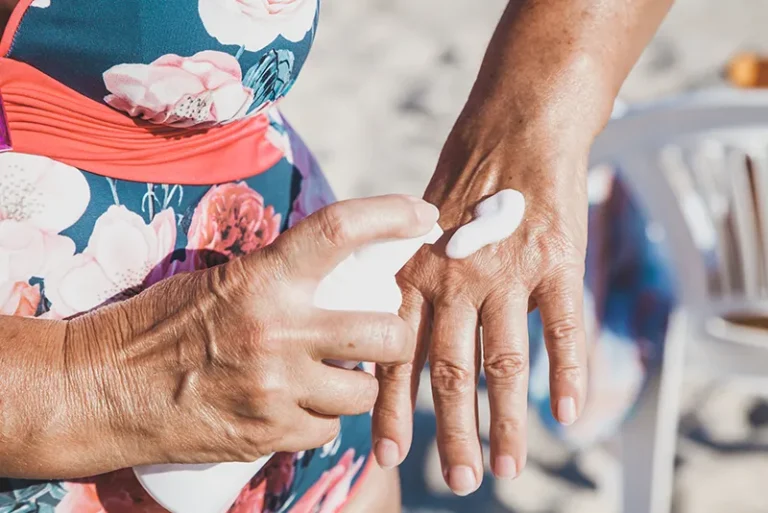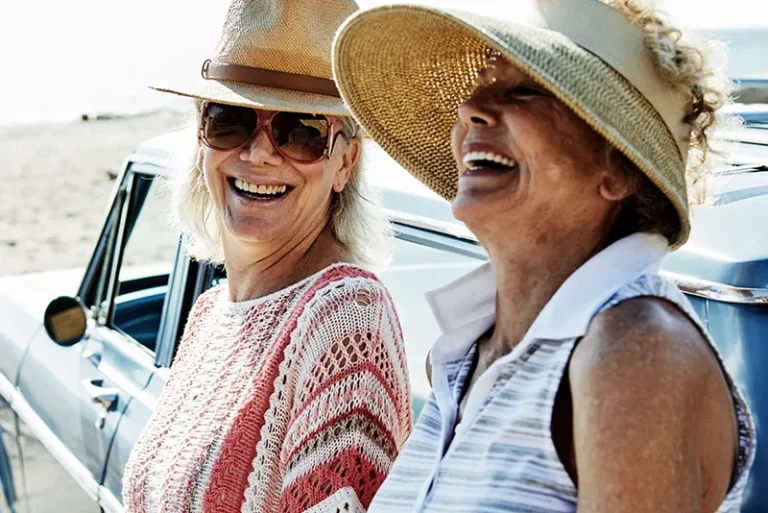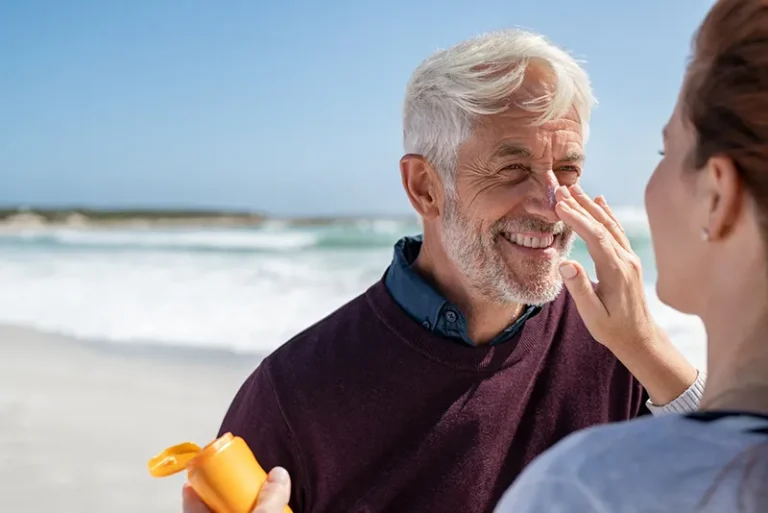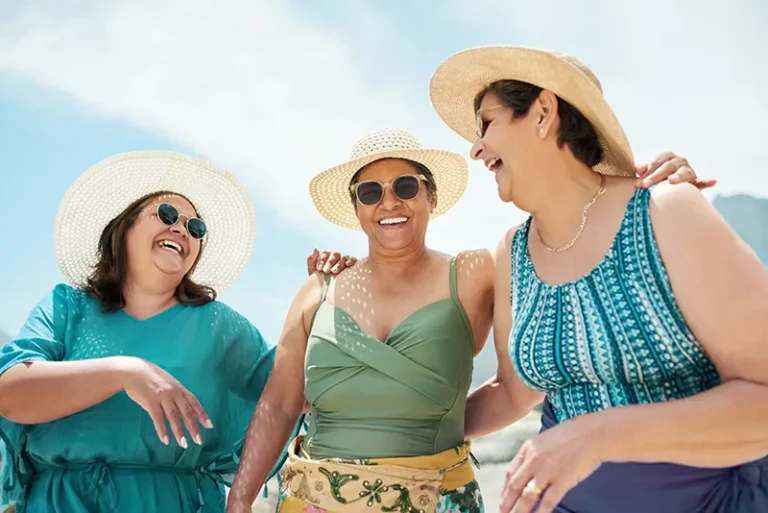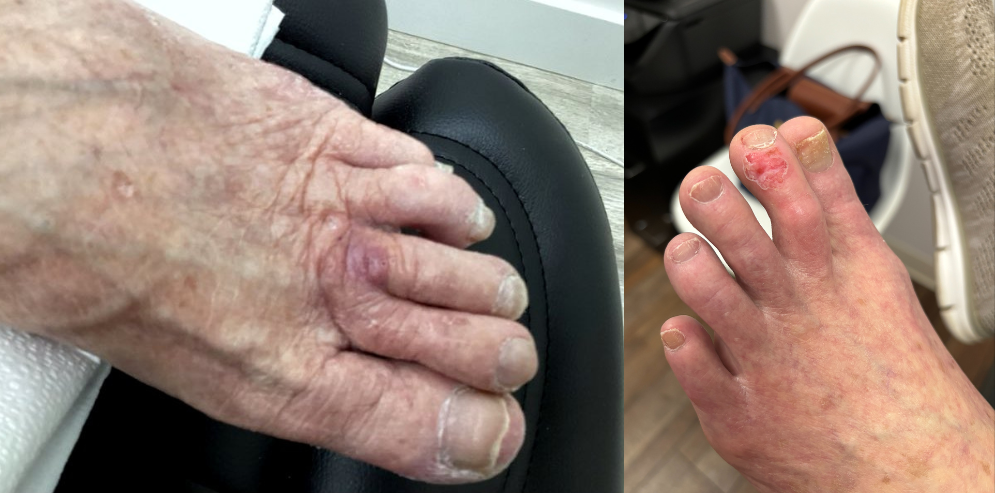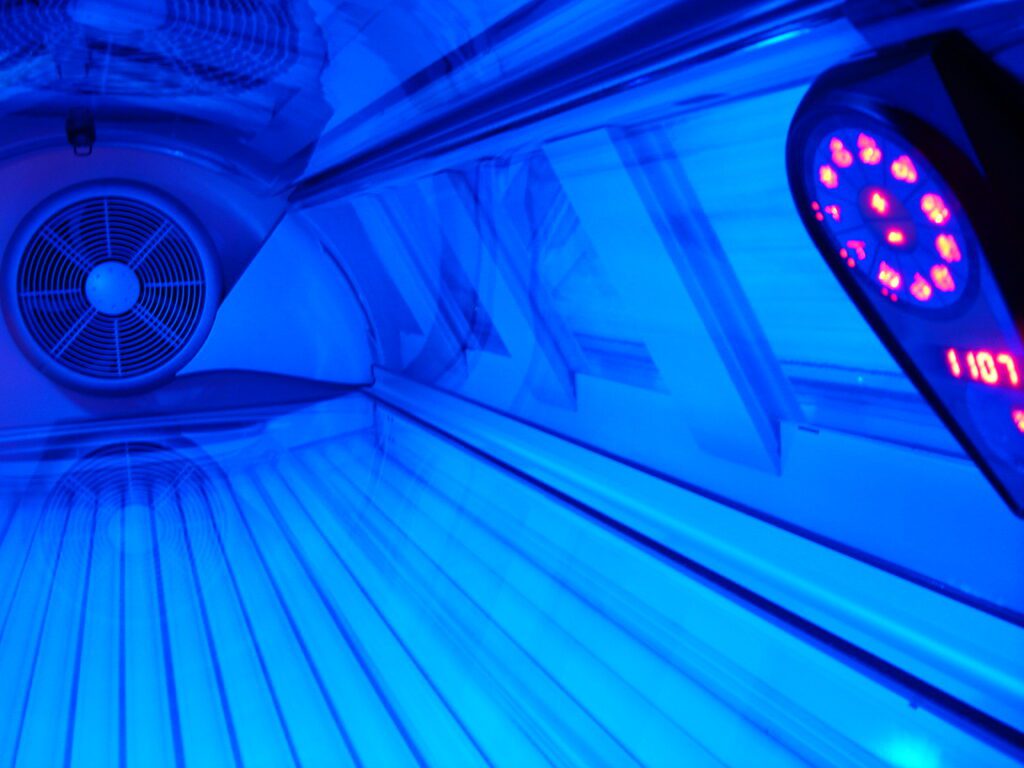
When it comes to tanning beds, there’s a lot of misinformation being spread. A lot of this misinformation comes from tanning salons and avid tanners who believe (or want you to believe) that tanning has health benefits. How do you differentiate tanning bed myths from facts? The truth about tanning beds comes down to this: there’s no such thing as healthy UV tanning.
Do tanning beds cause skin cancer?
Yes. The American Academy of Dermatology Association says indoor tanning can elevate your risk of developing squamous cell skin cancer by 58% and basal cell skin cancer by 24%. Using a tanning bed before the age of 20 can also increase your risk of developing melanoma by 47% — and that risk increases every time you use a tanning bed.
Most tanning beds, sunlamps, and tanning booths use bulbs that emit ultraviolet A (UVA) rays. UV radiation (be it ultraviolet A or ultraviolet B) can damage the DNA in your skin cells, causing the cells to begin growing out of control. This can lead to skin cancer, such as squamous cell skin cancer, basal cell skin cancer, or melanoma, which can spread to other parts of the body if left untreated.
Because tanning beds use UVA bulbs, indoor tanning can put your skin at risk for premature aging. UVA rays have been linked to skin aging because they reach the skin at a deep level. Wrinkle formation is a sign of early aging caused by exposure to UVA rays. This is also known as photoaging.
Are tanning beds safe?
As you might have already guessed, tanning beds aren’t good for you. They use high-intensity UV radiation to tan the skin. A tan is actually visible evidence of damage to the DNA inside your skin cells. When exposed to UV radiation, certain skin cells produce melanin — a pigment that darkens through oxidation. The more you tan, the more those skin cells move closer to the surface of your skin, producing melanin as they move. This creates a darker skin tone. Your body releases melanin to protect skin tissue from UV radiation.
Is indoor tanning safe compared to sunbathing?
No. Using tanning beds and tanning outdoors are both unhealthy. In fact, tanning beds produce about 12 times more UVA radiation than natural sunlight.
Does getting a base tan prevent sunburn?
No. It doesn’t matter if you have a base tan or not. You can still get a sunburn, which can increase your risk of developing skin cancer.
Are tanning beds safe for young people?
No. While most cases of skin cancer are found in people older than 65, tanning beds aren’t safe for people of any age. Melanoma is the most common type of skin cancer seen among people from ages 25 to 29. It’s also seen in people aged 15 to 29. Tanning beds only elevate skin cancer risks for people of all ages.
Who’s at greater risk of developing skin cancer from tanning beds?
Anyone who uses a tanning bed is at risk of premature aging and skin cancer. However, some people are at greater risk than others, including people with:
- Skin that sunburns easily
- Light or fair skin, hair, and eyes
- A lot of freckles and moles
- A history of sunburn
- A personal or family history of skin cancer
Does using a tanning bed give you vitamin D?
Board-certified dermatologists recommend that healthy adults get vitamin D from their diet — not tanning beds. Good sources of vitamin D include egg yolks, salmon, cow’s milk, soy milk, cheese, orange juice, and more. Tanning beds aren’t good sources of vitamin D because, not only are they unsafe, but they produce UVA light instead of UVB light. Your body needs UVB light to produce vitamin D.
Can you become addicted to tanning?
Evidence suggests that tanning can become an addiction, and is often linked with other mental health disorders, such as seasonal affective disorder (SAD), substance abuse, body dysmorphic disorder (BDD), and more. Tanning produces feel-good endorphins and a rewarding feeling in the brain that can be addictive for some people. Signs of a tanning addiction can include:
- Spending an excessive amount of money on tanning
- Buying a tanning bed for your home
- Becoming agitated when you can’t tan
- Lying about how frequently you’re tanning
- Tanning for longer periods of time at higher intensities
- Continuing to tan regularly even after you’ve had skin cancer
Are there laws against tanning in the United States?
Regulations on tanning beds vary from state to state. However, concerns about the safety of tanning beds are nationwide. At least 41 states have passed some form of law that regulates the use of tanning beds by minors. States like Vermont, Oregon, Minnesota, California, Delaware, Louisiana, Illinois, Texas, and Oregon have banned the use of tanning devices by anyone under 18 years old.
Is there a safer way to get a tanned look?
Yes. If you want that summery, beachy look without putting your skin at risk, you can use a self-tanning product. Self-tanners contain an active ingredient called dihydroxyacetone (DHA), which is FDA-approved.
Get More Skin Cancer Prevention Information from GentleCure
Now that you have the answers to common questions about tanning beds and skin cancer, you can make informed choices about indoor tanning. Whether you’re seeking a treatment option for skin cancer, or you want to know more about skin cancer prevention, GentleCure™ is your trusted source of information. Contact us to speak with a skin cancer information specialist, or use our search tool to find an Image-Guided SRT location in your area.
